The White House in Washington, D.C., represents more than just the residence of the U.S. President. It symbolizes the Presidency, the American government, and the people of the United States. Since 1800, starting with President John Adams, it has housed all U.S. presidents. The building’s history reflects American history itself. The White House, located on Pennsylvania Avenue, was selected by George Washington and Pierre L’Enfant, linking it symbolically to the Capitol. Its construction began in 1792, using Aquia Creek sandstone, and it was first occupied by President Adams in 1800. Architect James Hoban designed the White House, involving enslaved laborers, local workers, and European immigrants in the construction. The White House is a prime example of neoclassical design. The White House has influenced American architecture significantly. Its neoclassical style inspired civic buildings nationwide, set a model for state capitols and governors’ mansions, and became an emblem for private and international architectural projects. The design of the White House facilitates its dual role as a residence and workspace. Its grandeur, room division, and specific areas like the Oval Office, State Dining Room, and public halls support presidential functions and ceremonies. Restorations of the White House faced challenges like structural weaknesses, budget and time constraints, and balancing historical integrity with modern needs. Special tours for architects or architecture enthusiasts, including specialty tours, events by the White House Historical Association, and access to publication research, are available. Architects can learn about adaptability, architectural techniques, resilience, symbolic design, and sustainable practices from the White House.
What is the White House?
The White House is the official residence and workplace of the President of the United States. It is the home of the President and their family and a living museum of American history. The White House symbolizes the Presidency, the United States government, and the American people. It has been the residence of every U.S. president since John Adams in 1800. The White House is located at 1600 Pennsylvania Avenue N.W. in Washington, D.C., the capital of the United States. It is on 18 acres (7.28 hectares) of land on Pennsylvania Avenue, between the Washington Monument and the Capitol Building.
The White House was designed by Irish-born architect James Hoban, who won a design competition held in 1792. Hoban oversaw the construction process involving enslaved laborers, local D.C. laborers, and skilled European immigrants. After the White House was set on fire during the War of 1812, Hoban was appointed to rebuild it. The White House is 168 feet (51.2 meters) long and 85 feet (26.1 meters) wide without porticoes. The Ground Floor, State Floor, and residence floors of the White House are approximately 55,000 square feet (5,110 square meters). This number does not include the West or East Wings. The White House has 132 rooms, 35 bathrooms, and six levels in the Residence. There are also 412 doors, 147 windows, 28 fireplaces, eight staircases, and three elevators.
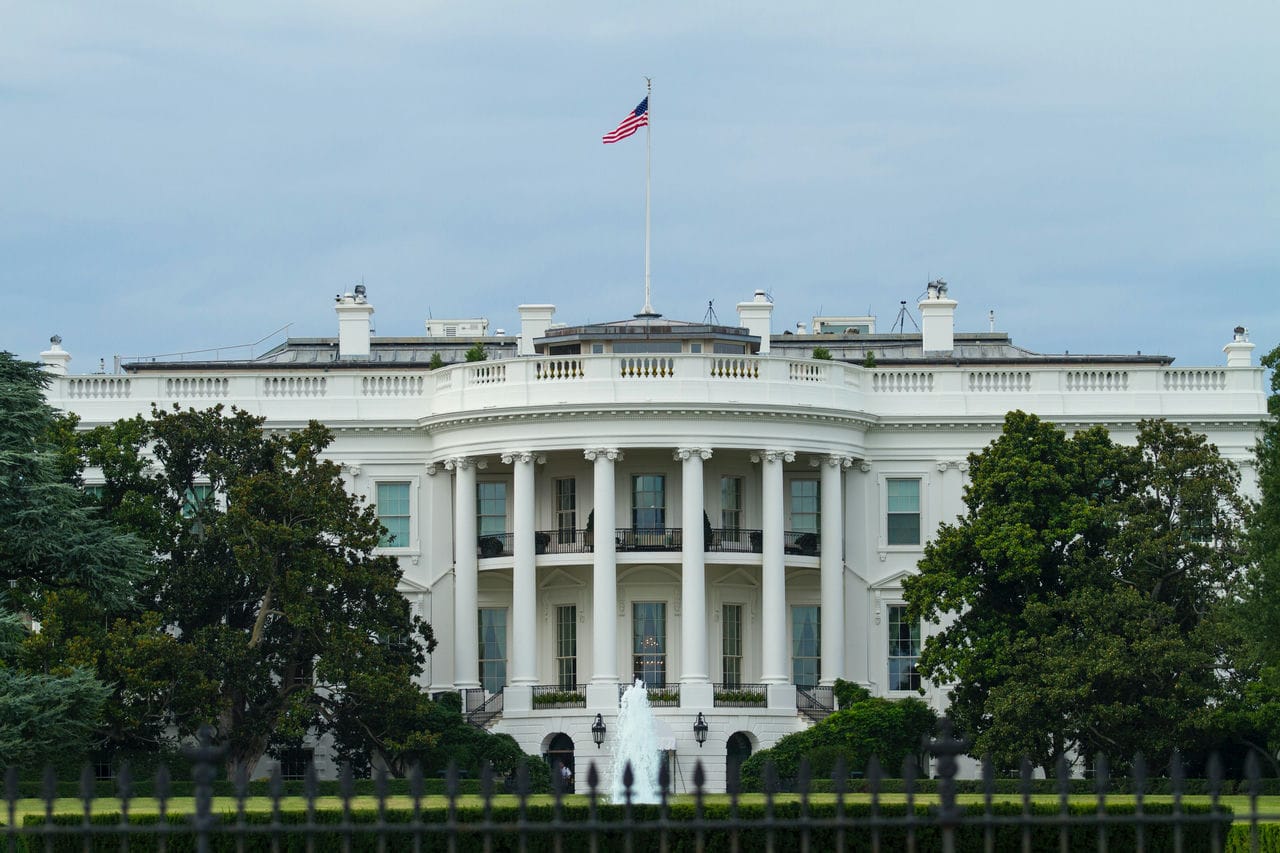
The location of the White House was selected by President George Washington and city planner Pierre L’Enfant, symbolically linking the President’s House to the Capitol via Pennsylvania Avenue. The cornerstone of the White House was laid in 1792, and construction began shortly after. The building was constructed between 1792 and 1800 using Aquia Creek sandstone painted white. The White House was first occupied by President John Adams and his wife Abigail in November 1800 while construction was still underway.
What architectural style is most prominent in the White House?
The most prominent architectural style seen in the White House is Neoclassical architecture. This is evidenced in the symmetrical and ordered layout of the White House’s façade. It has a columned central entrance on each side with a triangular pediment above the two-story porch, decorated with dentils and metopes. The columns are stately Roman-influenced Tuscan order, while the south façade boasts Ionic order columns. The walls have rusticated stone on the two lower floors, with smooth dressing on the upper floor. The neoclassical elements also extend to the interiors with features like curving walls, high domed ceilings, and marbled ionic column capitals in the Oval Room. The reasons behind the neoclassical style during the early Republic period were aesthetic and ideological. The grand architectural style aligned with the new nation’s vision of itself as directly connected to the democratic principles of Ancient Greece and Rome while requiring impressive accommodation for the President. The White House’s neoclassical design also distinguished early federal buildings and continues to be an iconic architectural emblem of the highest office in the United States.
What structural engineering principles are employed in the construction of the White House?
The White House features several structural engineering techniques in its design. Firstly, the construction of the White House employs the principle of load-bearing architecture. This principle involves using walls, columns, and other vertical elements to support the structure’s weight above them. The White House, like many other historic buildings, was built using this principle, with its walls and columns bearing the load of the floors and roof above. Secondly, the White House construction also demonstrates the principle of redundancy, which includes extra elements to ensure structural integrity even if one part fails. This principle is often used in structures critical for safety or high occupancy, like the White House. Thirdly, the principle of balance is also evident in the construction of the White House. This principle involves the distribution of forces and masses to maintain the structure’s stability. The symmetrical design of the White House is a clear demonstration of this principle. Fourthly, the principle of sustainable design has been incorporated into the maintenance and modernization of the White House. This involves optimizing energy performance, protecting and conserving water, enhancing the indoor environment, and reducing the environmental impact of materials. Lastly, the principle of resilience is also employed in constructing the White House. This involves designing the structure to withstand adverse conditions and recover quickly from any damage.
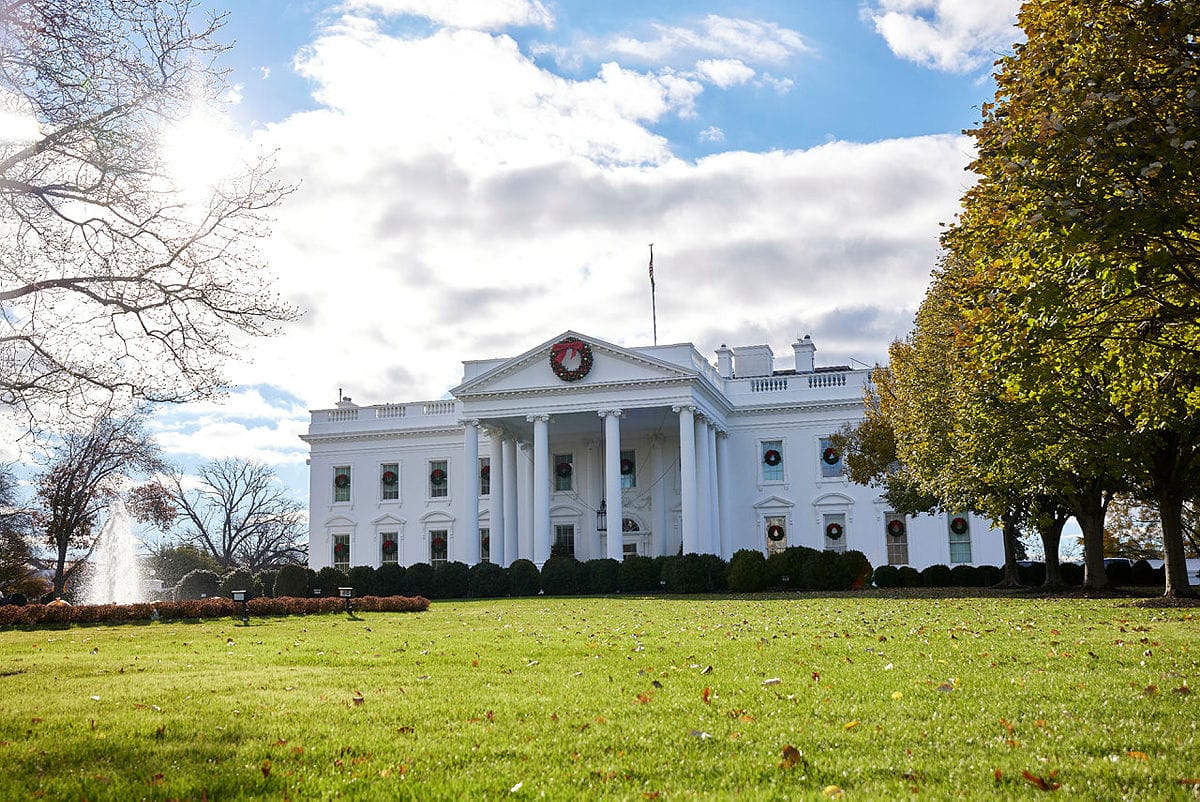
Who designed the White House?
The White House was designed by Irish-born architect James Hoban. In 1792, Hoban entered a competition organized by the Commissioners of Public Buildings to design the presidential mansion and submitted preliminary drawings for the residence. Out of the submitted entries, President George Washington selected Hoban’s neoclassical design for the White House likely because it aligned with the new republic’s vision of itself connected to Ancient Greek and Roman democratic ideals.
Hoban was born and trained as an architect in Ireland before immigrating to the United States in the 1780s. Between 1792 and 1800, James Hoban managed the planning and erection of the White House based on his initial drawings. He closely supervised excavation, stone cutting, and building to adapt to the site’s landscape and material availability without compromising the imposing vision. Hoban made several additions to the White House after its damage in the 1814 burning by the British during the War of 1812. This included the South Portico in 1824 and the North Portico in 1829, giving the mansion its iconic columned look. The prominent neoclassical national landmark reflects Hoban’s original elegant design over 200 years after its construction.
What are the historical design influences visible in the White House?
The White House incorporates several key historical design influences in its iconic form. Firstly, The White House was designed in the Neoclassical style by Irish-born architect James Hoban, influenced by the Leinster House in Dublin that he had admired. His winning 1792 design had a three-story facade and over 100 rooms. Under Washington’s influence, it was amended to a two-story facade with 11 bays across, all stone-faced. Secondly, the architecture draws from classical influences like 16th-century Italian Andrea Palladio’s Palladian style. This is seen in the rusticated stone ground floor and metrical windows. Roman baths inspire the oval rooms. Elements like the upper windows are inspired by Irish country houses Hoban knew. Thirdly, later presidents made additions reflecting Victorian and colonial revival aesthetics. Thomas Jefferson added the East and West Colonnades linking the wings. James Monroe said the southern entrance was rounded in 1824. The 1902 West Wing and 1942 East Wing were office spaces in the colonial revival style. Lastly, 20th-century restorations aimed to highlight original details. The Truman renovation in 1948-1952 upgraded infrastructure but kept the exterior. Jacqueline Kennedy’s 1961 restoration revealed actual wall colors and added antiques. Recent renovations continue preserving Neoclassical and colonial details while upgrading technology and infrastructure.
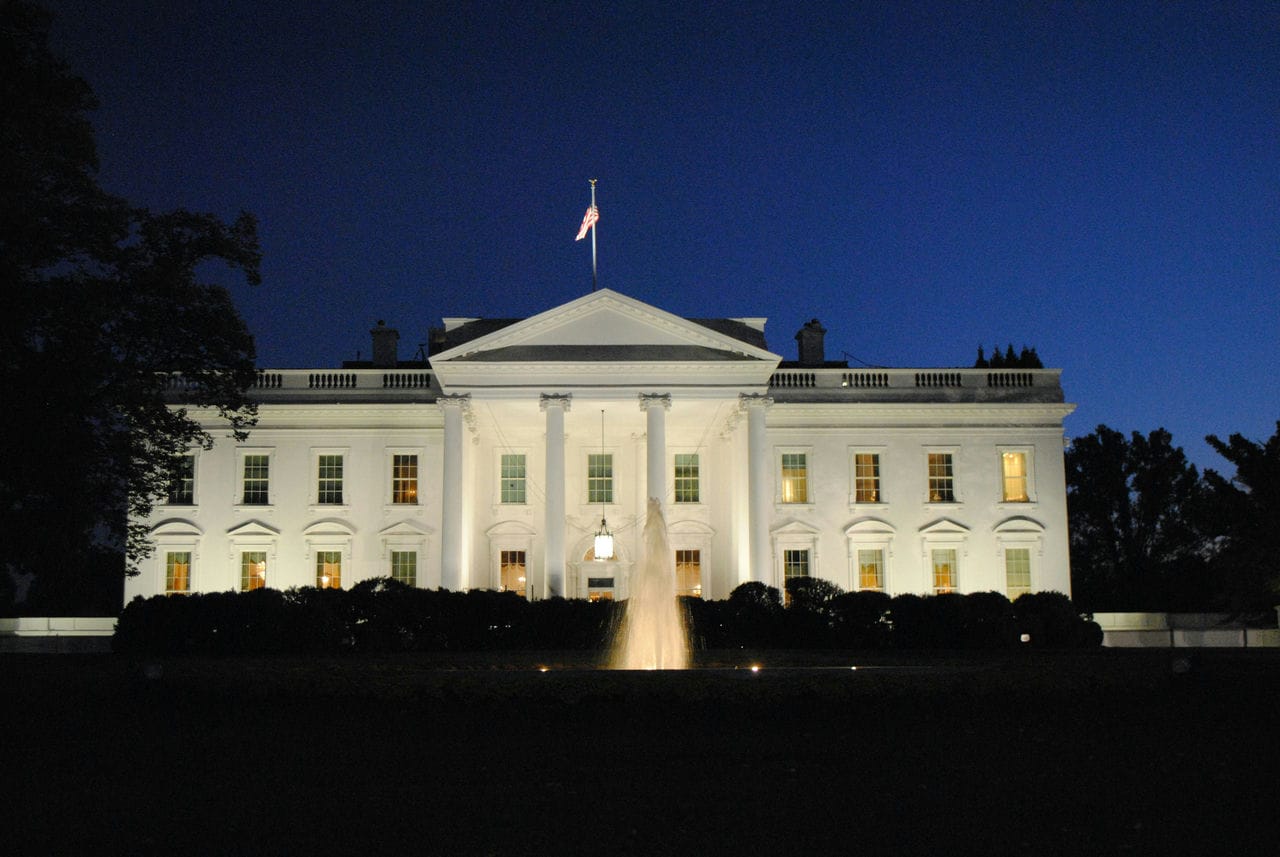
How has the White House influenced the design of other buildings in the United States?
The White House has influenced the design of other buildings in the United States in several key ways. Firstly, its neoclassical style set a precedent for monumental civic buildings in Washington, D.C., and beyond. When it was constructed in the late 18th century, the White House exemplified the architecture of the new republic – drawing inspiration from ancient Greek and Roman styles with its symmetrical façade, tall columns, triangular pediment, and domed ceilings. This iconic look directly shaped buildings like the U.S. Capitol, Lincoln Memorial, Jefferson Memorial, and Supreme Court. Secondly, it established the White House as a national symbol and model for governor’s mansions and state capitols. State governors’ official residences across the country, from the Georgia Governor’s Mansion to Michigan’s Lansing Capitol, have copied design elements of the White House, such as frontal columns, porticos, and rotundas. Lastly, the White House has been an aspirational architectural emblem, with prominent business people, organizations, and foreign dignitaries building mansions modeled after America’s most famous address. Several factory owners and bankers in the 19th century purchased white-columned villas resembling the presidential home to display their prestige and power. 20th-century examples include full-scale replicas of the White House by the religious group Rosicrucians in California and businessperson William Fox in New York. Overseas, the former royal palace in Haiti and presidential compounds in Nigeria, Sudan, and Taiwan reflect the commanding architecture found in the iconic building at 1600 Pennsylvania Avenue.
What purpose does the White House serve and how does the design help?
The White House serves as the official residence and workplace of the President of the United States. Its architectural design facilitates the monumental duties and ceremonial functions of the presidency. Hoban’s design divides the 132-room mansion to suit private residential ends and spaces for the public sphere of governance. The West Wing houses the Oval Office and executive workspaces, while the East Wing holds offices for the First Lady’s social responsibilities. The central Executive Residence contains staircases, antechambers, and the first family’s living quarters shaped in elliptical and curved forms to facilitate movement and visibility during official receptions. Rooms like the Oval Blue Room, Red Room, Green Room, and East Room are decorated to impress foreign dignitaries. State Dining Room banquets seat about 140 people to host diplomatic affairs. The Grand Foyer, Cross Hall, and Entrance Hall facilitate the high volume of White House visitors. The iconic residence’s scale and grandeur befit all executive functions, from legislation signings, press briefings, and embassy meetings to state dinners, performances, and public tours.
How is the White House maintained?
There are three key aspects of how the White House is maintained. Firstly, the maintenance and upkeep of the White House is an ongoing process handled by specialized staff and funded by Congress. The White House Historical Association notes that Congress is mandated to appropriate money for the “care, repair, refurnishing, and maintenance” of the White House and its grounds. This includes funding the salaries of critical staff like the Chief Usher, Curator, and White House Grounds Superintendent and financing major renovation projects. Secondly, the permanent White House residence staff, which consists of butlers, housekeepers, engineers, and grounds crews, carry out daily maintenance duties. They handle cleaning, minor repairs, landscaping, event setup, etc. More complex preservation work is done by specialized artisans and tradespeople contracted for specific projects. The Chief Usher coordinates maintenance efforts across the staff. Lastly, significant renovations of the White House happen periodically, whenever required, for structural reinforcement, technological updates, historical restoration, or aesthetic improvements. Notable examples include the Truman Reconstruction in the 1950s, Jacqueline Kennedy’s restoration in the 1960s, and a Carter-era infrastructure upgrade.
How does the White House reflect cultural and contextual relevance in its design?
The White House reflects cultural and contextual relevance in its neoclassical design that aligned with the Early Republic era and founding ideals of America in the late 18th century. The new nation sought to establish credibility through architectural links to the origins of democracy in Ancient Greece and Rome. This growing interest manifested in the resurgence of neoclassical style – seen in other buildings like the U.S. Capitol, Lincoln Memorial, and Jefferson Memorial. The White House’s symmetrical façade with towering Roman-inspired columns, triangular pediments, and decorative dentils and metopes reflected classical Greco-Roman elements that signified the democratic ambitions of the new federal government.
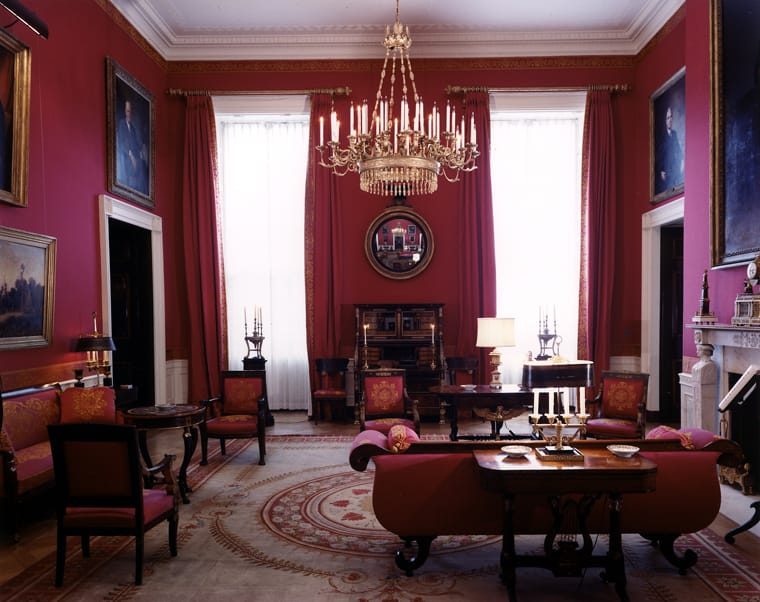
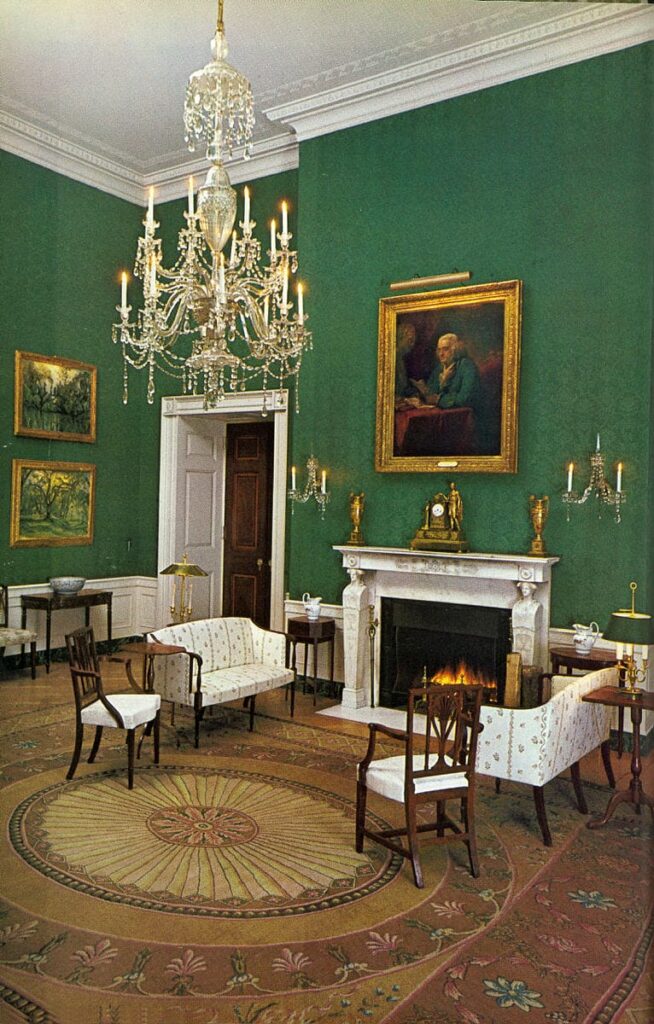
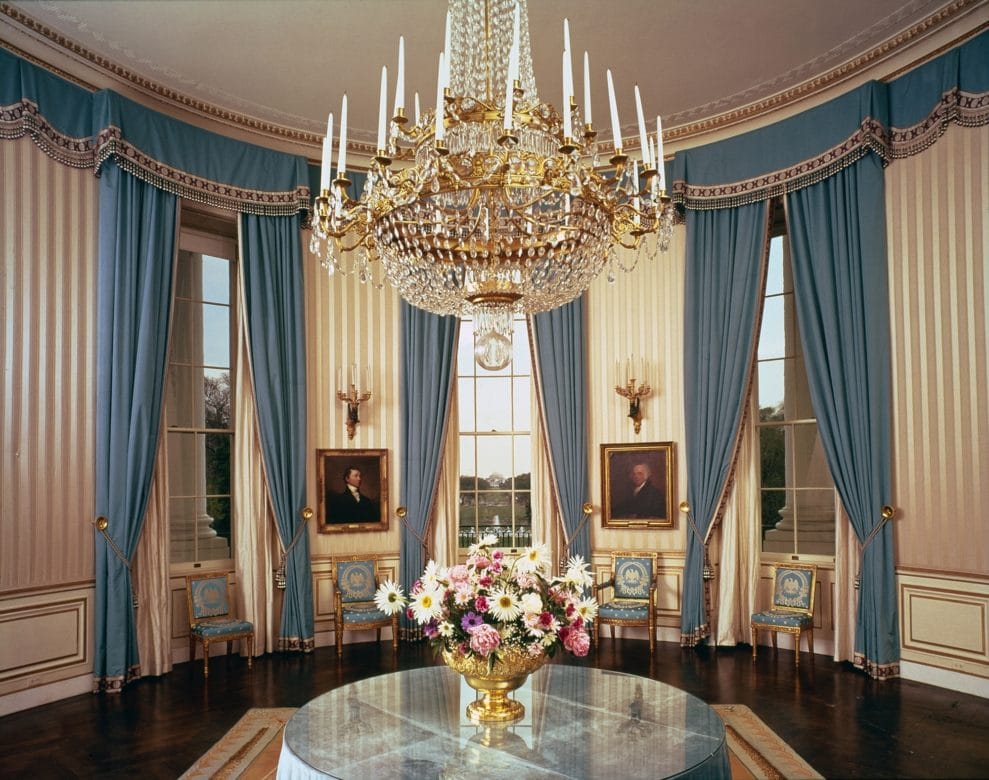
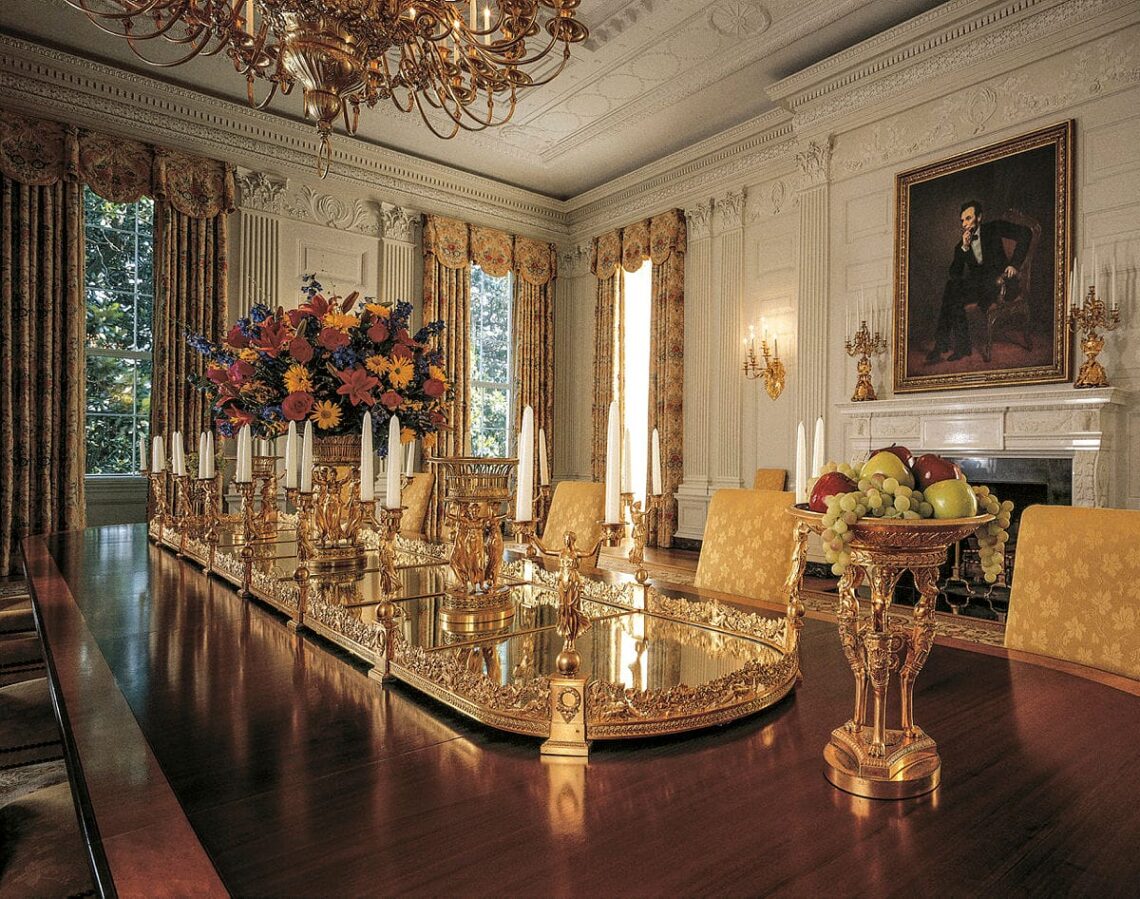
The White House was constructed with Aquia Creek sandstone quarried from Virginia and squared limestone blocks from the Government Island quarry near Washington, D.C. Using these readily available local materials kept costs down and building time short while allowing the mansion to sit compatibly within the Potomac site’s natural landscape. Prominent American architects like Benjamin Latrobe, Charles McKim, Frederick D. Owen, and William Adams Delano ensured the classically inspired interiors evolved alongside the nation from Empire to Victorian through 20th century touches.
What architectural trend or movement does the White House represent?
The White House, the official residence and workplace of the President of the United States, represents the Neoclassical and Palladian architectural styles. The Palladian style, named after Venetian architect Andrea Palladio, is known for its symmetry, perspective, and classical elements, leading to a grand aesthetic. Over the years, the White House has undergone numerous renovations, which have added elements of other architectural styles. Thomas Jefferson and architect Benjamin Henry Latrobe said the East and West Colonnades link the East and West Wings with the Executive Residence. These additions reflect Jefferson’s architectural ideas, borrowing from Renaissance villas. In 1902, President Theodore Roosevelt initiated a major renovation, which included relocating the President’s offices from the Second Floor of the Residence to the newly constructed West Wing. This renovation reflected the Beaux-Arts style, influenced by European precedents in art and design.
What are the challenges faced during the restoration of the White House?
The White House has faced several key challenges during restoration. Firstly, a major challenge was the extremely poor structural condition of the building itself before the start of renovations. When President Truman ordered the near-total gutting and reconstruction of the interior in 1948, engineers found that after 150 years of alterations and shoddy upkeep, the White House was on the verge of collapse. Floors and walls were sagging, the ceiling was cracked, and Margaret Truman’s piano broke through the rotted second floor at one point. Secondly, major budget and time pressures were inherent in renovating the residence and workplace of the incumbent president. Cost overruns due to the Korean War caused Truman to scale back decorative ambitions. Schedule urgency also impacted past renovations, like President Theodore Roosevelt only allowing 4 months for his 1902 redesign. The White House needed to remain functional, limiting the scope of work possible at any time. Lastly, balancing historical restoration, modern amenities, and personal tastes was an ongoing challenge. Jacqueline Kennedy’s 1960s restoration exemplifies this – seeking to recover the Federal-era integrity while meeting the needs of a 20th-century First Family. She also embellished interiors like the Oval Office based on her aesthetic preferences. Preserving the past while upgrading for the present was a tricky, subjective process across White House renovations.
How does the White House comply with contemporary safety and accessibility standards?
The White House incorporates several key features to comply with modern safety and accessibility standards. Firstly, the White House is committed to ensuring accessibility for all users, including those with sensory, cognitive, and mobility disabilities. This commitment is reflected in the design and functionality of the White House’s official website, which conforms to the Web Content Accessibility level AA criteria. The website allows users to enlarge the font and toggle back and forth to “dark mode” for better visibility. It includes gender-inclusive pronouns and prefixes in its contact form, demonstrating a commitment to inclusivity. Secondly, the White House has implemented several sophisticated security measures to ensure the safety of its occupants. These measures include surface-to-air missile launchers across the city, a roof-mounted radar that monitors the area around the White House, and a range of infrared cameras that monitor the boundary of the White House. The White House Complex also lies at the center of a highly controlled, 15-mile flight restriction zone. Thirdly, the White House has taken steps to ensure digital accessibility in compliance with Section 508 of the Rehabilitation Act. This includes the use of “accessibility roadmaps” to plan and measure accessibility efforts and take actionable steps to remediate non-conformance on time. Fourthly, the White House has made efforts to ensure the physical accessibility of its premises. This includes ensuring that all federal office buildings and workplaces are accessible to employees with disabilities by the Architectural Barriers Act of 1968 and related standards. Fifthly, the White House has significantly invested in advanced technologies to ensure safety and security. This includes a $50 (€ 45, £39) million upgrade to the White House Situation Room, which now features the highest standard of security enhancements. Lastly, the White House is actively working towards using Artificial Intelligence (AI) responsibly. This includes establishing AI governance structures in federal agencies, advancing responsible AI innovation, increasing transparency, and protecting the rights and safety of individuals.
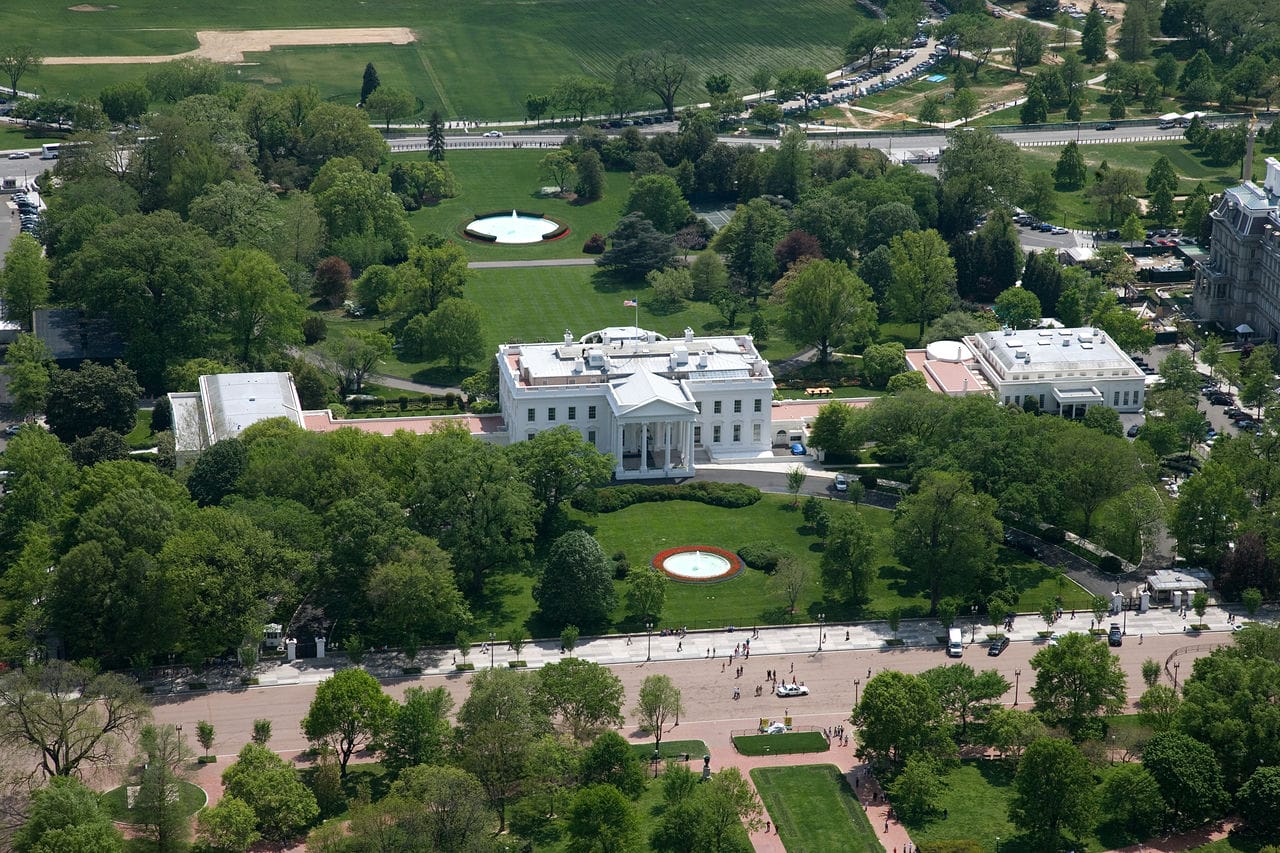
Are there any specific tours for architects or architecture enthusiasts visiting the White House?
Yes, there are some unique opportunities for architects and architecture enthusiasts to tour the White House. Specialized tours that provide a more in-depth look at the architecture, design, and history of the residence. Hard Hat Tours allow visitors to see the White House from the inside out, including rare views of the structure, foundation, wiring, and more. Groups like the American Institute of Architects and architecture school alum associations sometimes get access to custom tours showcasing architectural details upon request and approval. These are often private guided tours. Non-profit organizations schedule symposiums, receptions, and exhibitions that dive deeper into the architectural heritage of the White House. Authors working on architecture-focused books and publications related to the White House building may get access to tour-specific rooms and areas for research upon request and by providing credentials. The general public White House tours do not have an architectural focus, those working in the architecture field have unique access opportunities to appreciate the residence for its historic design.
What lessons can architects learn from the design and construction of the White House?
Architects can learn several key lessons from the design and construction of the White House. Firstly, architects can learn the importance of adaptability in design from the White House. The original design by James Hoban was basic enough to allow future presidents to make modifications according to their needs. This flexibility in design is a crucial lesson for architects, as it allows for the evolution of a building over time, accommodating changing needs and technologies. Secondly, the White House exemplifies using architectural techniques such as arches and vaulting for aesthetic and functional purposes. These techniques supported heavy masses that would otherwise require bearing walls or pillars. This demonstrates the importance of integrating form and function in architectural design. Thirdly, the White House teaches architects about the significance of resilience in design. Despite being burned down during the War of 1812, the building was reconstructed based on the original designs. This resilience is a testament to the strength and durability of the original design and construction. Fourthly, the White House showcases the importance of incorporating national and cultural symbols in design. The building, designed in the Neoclassical style, is an enduring symbol of American democracy. This highlights the role of architecture in reflecting and shaping national identity. Lastly, the White House underscores the importance of sustainable and eco-friendly design. Over the years, various modifications have been made to the building to improve its energy efficiency, such as adding a solarium during the Coolidge administration. This underlines the role of architecture in promoting environmental sustainability.
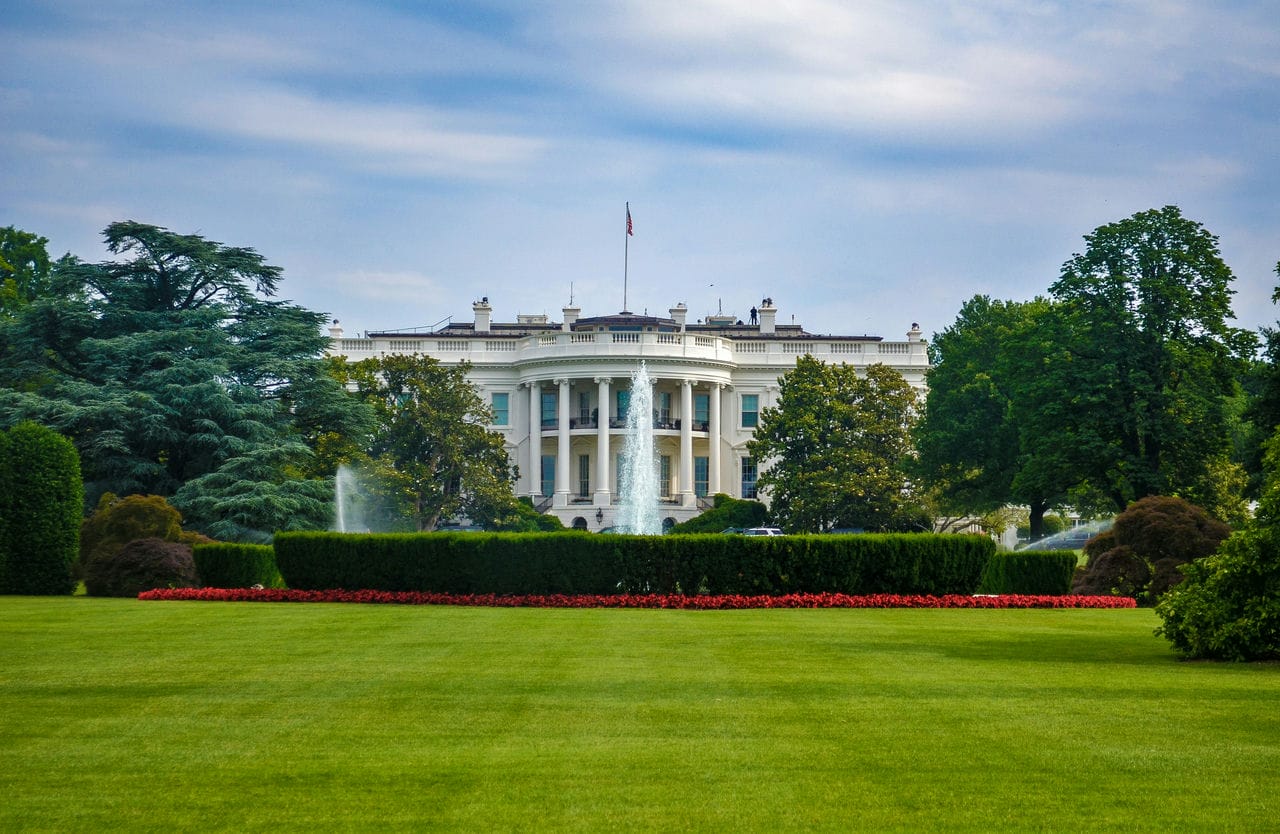
What are the best architectural landmarks in the United States to visit as an architect?
Listed below are the best architectural landmarks to visit as an architect:
- Fallingwater, Mill Run: Fallingwater is a must-visit for architects exploring organic architecture and its integration with nature. The house dramatically cantilevers over a waterfall, showcasing Wright’s philosophy of designing structures with humanity and their environment. Fallingwater is celebrated for its innovative use of materials, such as stone and concrete, and its strong visual connections to the surrounding landscape. The design’s dynamic and fluid form challenges traditional architecture, making it an iconic piece of 20th-century architecture.
- Philadelphia City Hall: Philadelphia, City Hall is a recognizable landmark for architects interested in Second Empire architecture. Completed in 1901 and designed by John McArthur Jr. and Thomas Ustick Walter, it was the tallest habitable building in the world until 1908. The building’s intricate masonry, grandiose scale, and elaborate decoration exemplify the Second Empire style. Its central tower, topped with a statue of William Penn, is a key feature of the Philadelphia skyline and offers insights into the architectural ambitions of the late 19th century.
- The Barnes Foundation, Philadelphia: The Barnes Foundation, designed by Tod Williams and Billie Tsien and opened in 2012, is a modern architectural landmark for architects studying museum design and urban context. The building’s design focuses on natural light, textural materials, and creating a contemplative space for viewing art. Its layout and use of materials, such as Negev stone and oak, provide a warm and inviting environment. Integrating landscape elements, like a reflecting pool and garden, further enhances the visitor experience, making it a modern masterpiece in museum architecture.
- Eastern State Penitentiary, Philadelphia: Eastern State Penitentiary, designed by John Haviland and opened in 1829, is significant for architects interested in the evolution of prison architecture and the use of architecture for social reform. The penitentiary’s radial plan was revolutionary, allowing for solitary confinement and a focus on penitence, a novel concept at the time. The Gothic-inspired architecture, with its imposing walls and vaulted hallways, was intended to inspire remorse in inmates. It is a haunting example of early American penal architecture and its societal implications.
- The Fisher Fine Arts Library (formerly Furness Library), University of Pennsylvania: The Fisher Fine Arts Library, designed by Frank Furness and completed in 1891, is an essential site for architects studying the Victorian Gothic Revival and the American Aesthetic Movement. Furness’s design is noted for its bold and unconventional style, combining Gothic and Romanesque architectural elements with interior decoration and an extensive use of color and texture. The building’s layout emphasizes natural lighting and open spaces, offering a unique perspective on late 19th-century library design.


